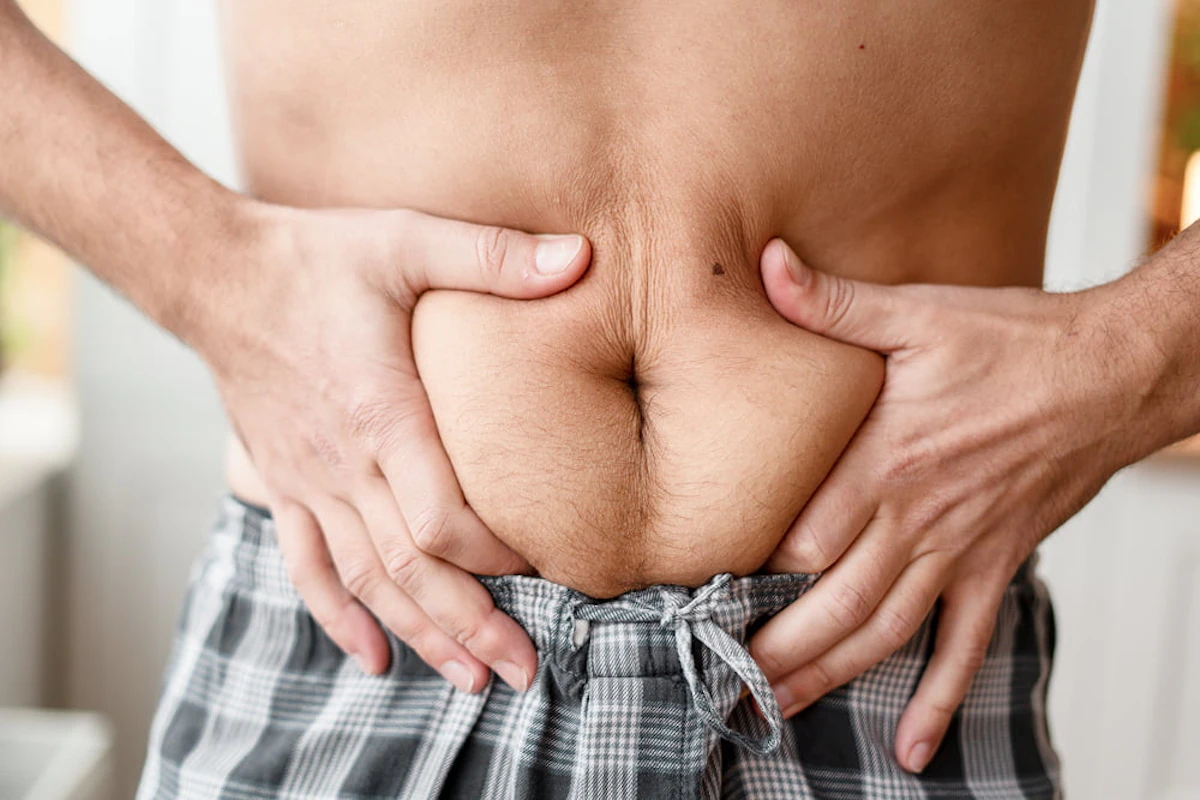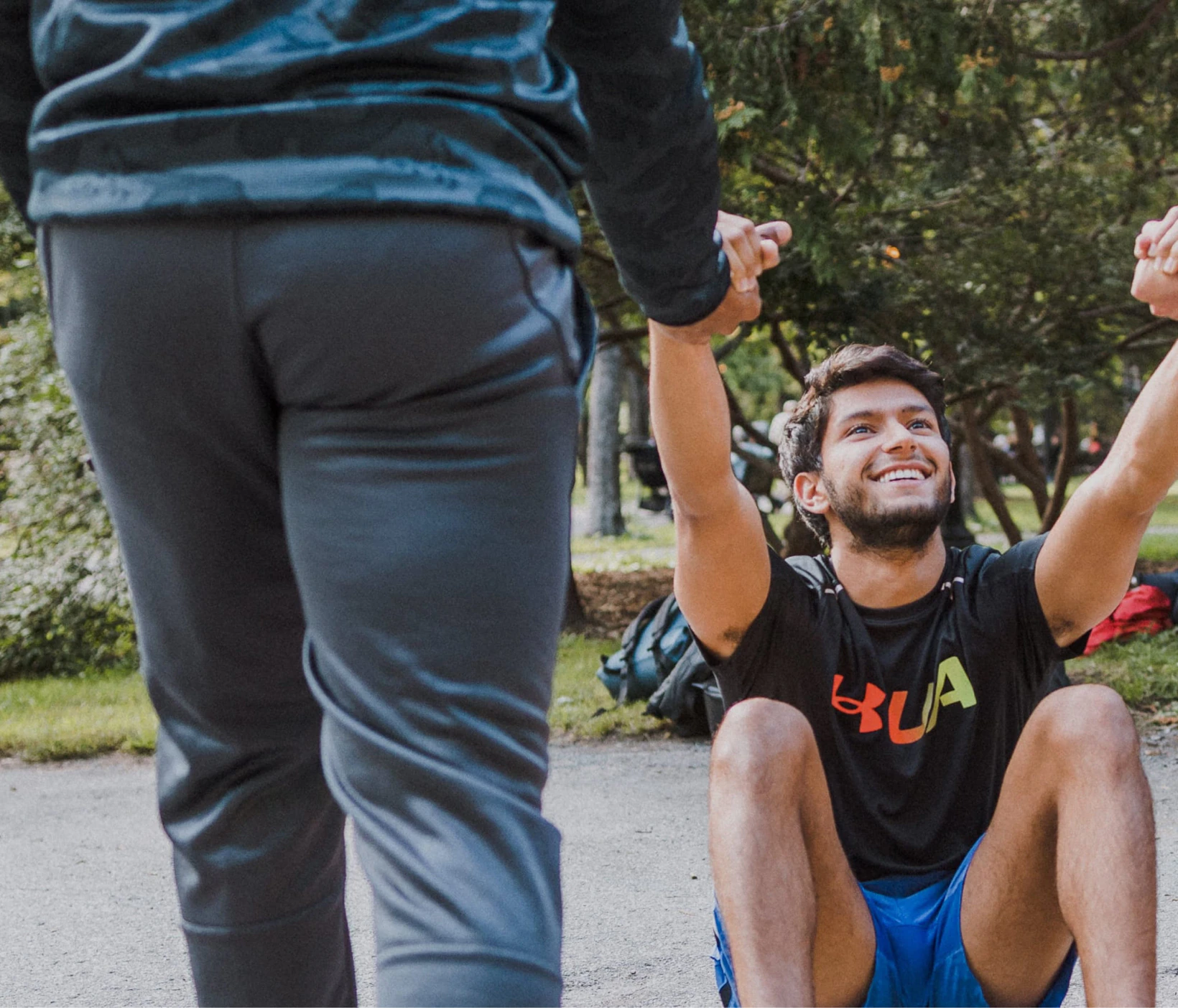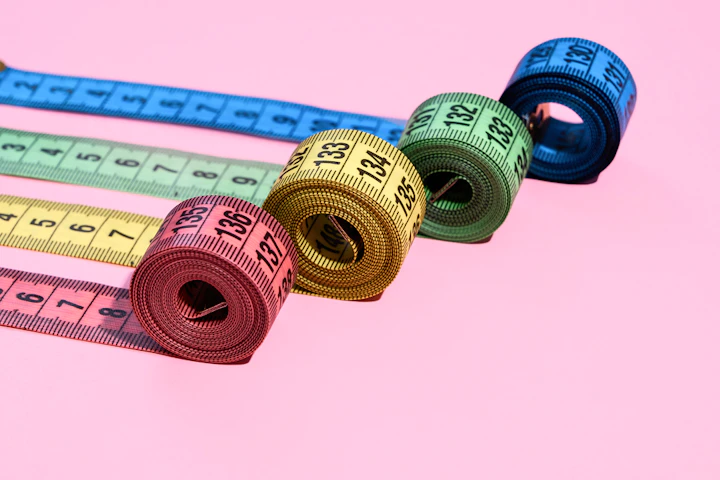
10 min read
Summary
What is the best sport for losing belly fat?
🔥 Losing belly fat: what does it mean?
🫀 The advantages of cardio sports
💪🏻 The benefits of strength & conditioning sports
Does running flatten the stomach?
🏃 Running to lose stomach fat: a classic
✋ The limitations of running to tone your belly
What distance or time to run to lose belly fat?
📈 Respect the principle of progressiveness
👩⚕️ Recommendations to follow

Receive advice from our passionate coaches!
Running often rhymes with challenge, sweat, pushing oneself, and… hoping to slim down their silhouette, particularly around the belly. But is it really effective or a stubborn myth? Between misconceptions and scientific evidence, let's explore what running can (or cannot) offer to lose abdominal fat and define one's abs, while preserving one's health.
What is the best sport for losing belly fat?
Weight loss, and particularly abdominal fat, primarily depends on a caloric deficit. Engaging in appropriate physical activity increases energy expenditure, improves metabolism, and helps sculpt the body. Among all sports, which are the most effective for achieving a flat belly without sacrificing health?
🔥 Losing belly fat: what does it mean?
Losing belly fat is not limited to losing superficial fat. It encompasses several dimensions.
Lose subcutaneous or visceral fat mass, which is deeper as it is located around the organs.
Building muscle, especially in the abdominal belt: transverse, rectus abdominis, obliques… Gaining tonicity helps to better define, refine the silhouette but also improve posture.
Taking care of digestion to avoid bloating, a swollen belly: a dimension that involves diet, hydration, breathing, and movement.
🫀 The advantages of cardio sports
In this overall context, a so-called "cardio" sports practice (running, cycling, swimming, brisk walking, etc.) offers several advantages for losing belly fat.
High energy expenditure: the longer or more intense the effort, the more calories are burned, contributing to the necessary energy deficit for weight loss.
Reduction of visceral abdominal fat: studies show that aerobic exercise (including running) decreases abdominal fat even without major dietary changes.
Improvement of basal metabolism: the more one increases their cardiorespiratory capacity, the more the body uses energy at rest. Regular cardio practice helps with that.
Benefits for overall health: heart health, respiration, hormonal regulation, resistance to stress (notably via cortisol) etc., can indirectly influence fat storage around the belly.

💪🏻 The benefits of strength & conditioning sports
However, limiting yourself to cardio as the only sports activity is often not enough. Strength & conditioning (abs, core training, full-body) offers complementary benefits:
Increase in muscle mass, which raises the resting metabolism (muscle "costs" more in calories).
Better abdominal tonicity, better posture, which allows the belly to appear flatter even if fat is not completely absent from the area.
Improvement of insulin sensitivity and hormonal regulation : which can help avoid excessive fat storage, especially in the abdominal area.
Does running flatten the stomach?
Running to lose stomach fat is a natural reflex: we imagine that each stride burns fat and that, over time, we slim down and the stomach flattens. In reality, running plays an important role in the loss of abdominal fat, but it is neither automatic nor sufficient without a holistic approach.
🏃 Running to lose stomach fat: a classic
Running remains one of the most effective sports to increase energy expenditure and promote fat burning. Long runs in endurance allow the body to gradually tap into its reserves, while interval training stimulates the metabolism and prolongs the calorie-burning effect well after the effort. Several studies confirm that this type of training helps reduce abdominal fat, including visceral fat, often the most harmful for health. Running thus acts as a catalyst for those who wish to lose weight and slim their figure.
✋ The limitations of running to tone your belly
However, running alone is not enough to sculpt the abdominal muscles. You cannot target fat loss locally: exercising or doing sit-ups does not only melt the belly, it is the overall fat mass that decreases.
Moreover, an unbalanced diet, chronic stress that raises cortisol, or a lack of sleep can slow progress, even (or even more so, if the load is too high compared to abilities) with many kilometers on the clock.
Finally, running without incorporating strength & conditioning limits the gain in abdominal toning, and increases the risk of injury if the training is too intense. In other words, running helps, but it must be complemented by other levers.
What distance or time to run to lose belly fat?
The effectiveness of running depends less on a specific distance than on the frequency, regularity, and variety of training. To turn your runs into slimming allies, you must structure your plan around progressiveness and adherence to health recommendations.
📈 Respect the principle of progressiveness
In the beginning, it's unnecessary to aim for a half marathon or to run every day: it's regularity that matters. Start with 20-minute workouts, twice a week, outdoors or on a treadmill, to establish a solid foundation.
Once endurance is established, you can gradually increase the duration of runs, then introduce pace variations with interval training or hill workouts. This progressive load increase allows the body to adapt, burn more calories, and more effectively mobilize the fat stored around the belly.
👩⚕️ Recommendations to follow
To achieve visible results, it is advisable, in the long run, to run three times a week, with workouts ranging from 30 minutes to an hour at moderate endurance, complemented by a more intense interval training session. This mix of intensities optimizes both calorie burning and metabolic adaptation.
But to run and lose belly fat, recovery is equally essential: scheduling rest days or cross-training with gentle sports (swimming, cycling, brisk walking) helps limit the risk of injury and maintain good motivation. Finally, nutrition plays a key role: a slight caloric deficit, combined with good hydration and balanced meals, enhances the effectiveness of workouts.
⚠️ Conversely, an excess of stress characterized by too frequent outings, intense workouts performed on an empty stomach, or a pronounced caloric deficit can be counterproductive, as the body responds by increasing cortisol and favoring fat storage over fat loss.

In summary, when it comes to achieving weight loss and tackling stubborn belly fat, the key isn’t about trying to burn fat in a specific area but rather about reducing overall body fat—and the good news is that you don’t need to carve out hours each day to see results. Studies have shown that regular running or other physical activity for around 30 minutes, performed at moderate intensity or boosted by high intensity interval training (HIIT), can significantly aid in burning calories and targeting visceral fat. Because excess belly fat isn’t just a cosmetic issue—it is linked to elevated risks of heart disease and type 2 diabetes—it’s essential to adopt an approach that combines endurance, variation (including HIIT), consistency and healthy lifestyle habits. By committing to regular running, strength-training and good nutrition, you give your body the tools it needs to burn belly fat, reduce body fat overall, and lose weight in a sustainable way. Remember: you may not be able to directly choose which part of your body sheds fat first, but you can influence the process of fat loss—and in doing so, you protect your health and reshape your silhouette. But running does not guarantee an "immediate flat belly": you need to be patient, listen to your body, and be consistent. The key: a structured plan, progressive, including cardio, strength & conditioning, and lifestyle hygiene, and you will see your figure evolve.

Lou
Published on , updated on
share




